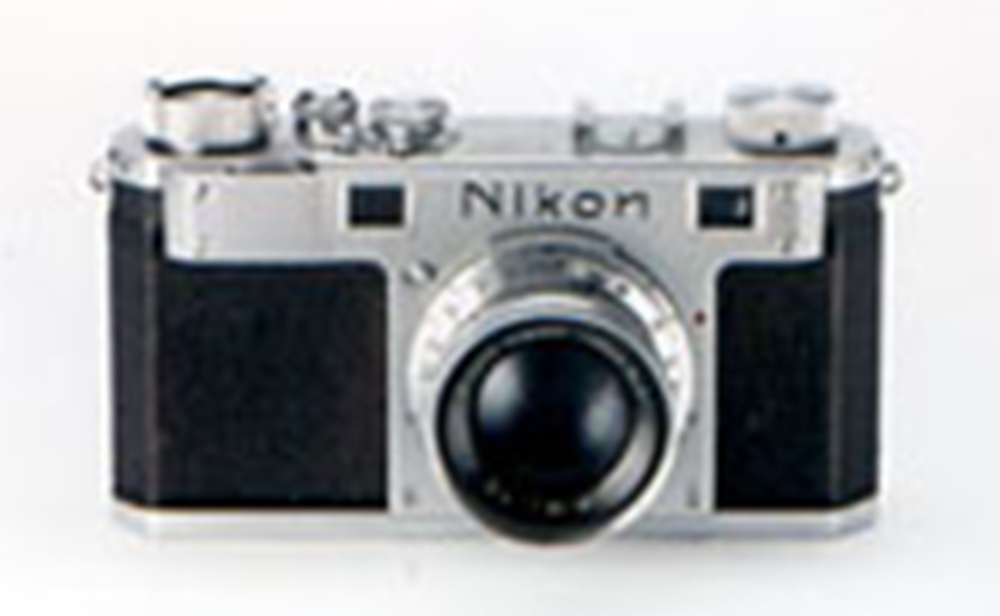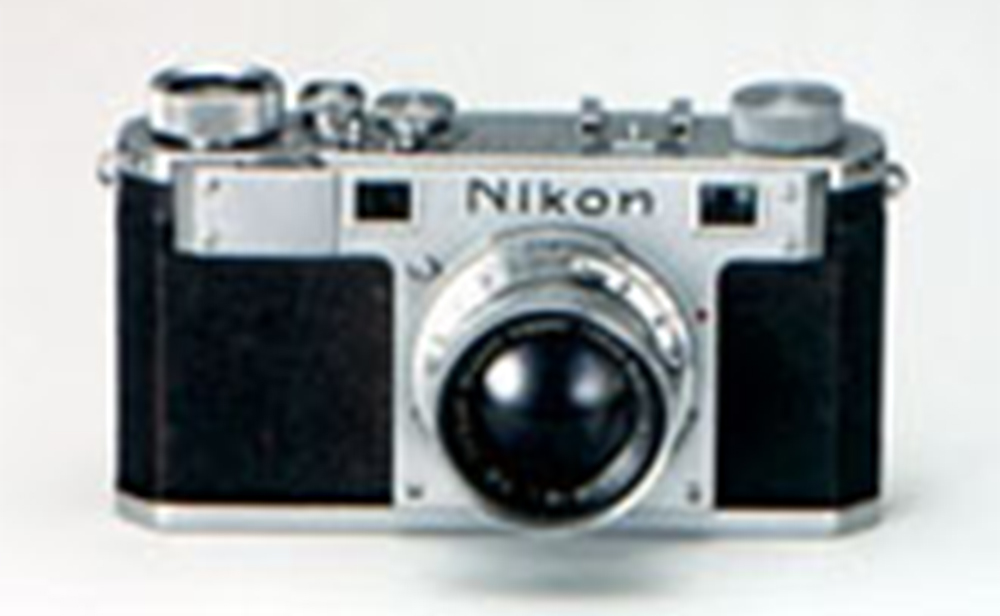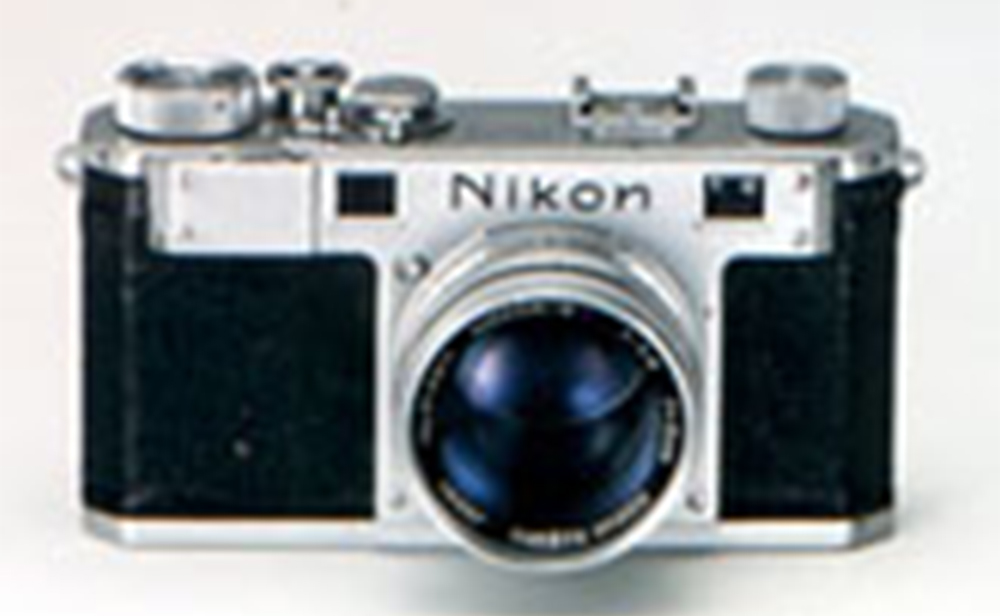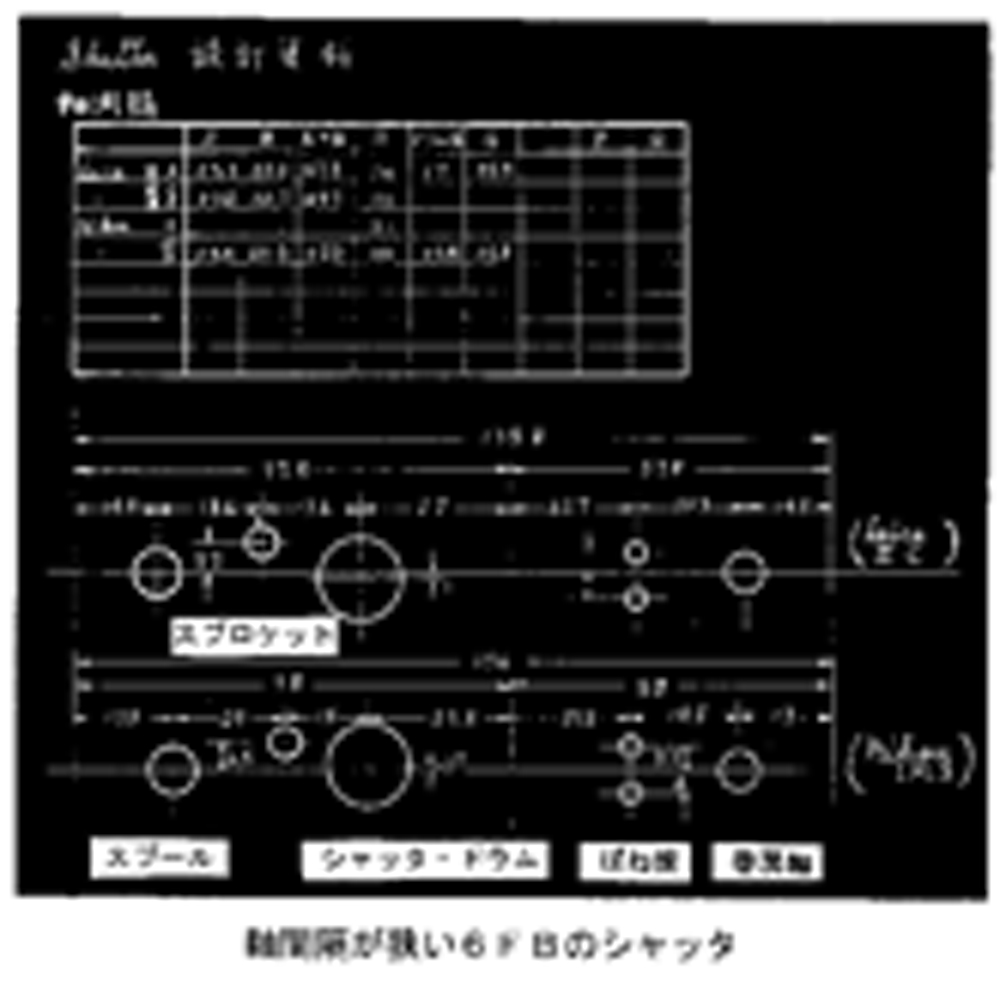Vol. 9. Nikon S/M/I
The dawning of "Nikon"
"Nikon" was first used as the name for small-size cameras made by Nippon Kogaku K.K. Today, it is the name by which the company is known worldwide. It achieved prosperity thanks to the historical Nikon cameras mentioned in this series, along with high-quality Nikkor lenses.
In this issue, we'll take a look at the first-generation cameras that formed the foundation for Nikon's success : Nikon "I", Nikon M, and Nikon S. These cameras are known as "6FB" inside the company, and they share the same basic design.
From "Nikoflex" to "Nikon"

(Nikon Camera)
As World War II came to a close, optical companies shifted their focus from the development of optical weapons employing optical technology to the creation of products for everyday life. Nippon Kogaku K.K., one of the largest companies in the industry, decided to concentrate on the manufacturing of cameras.
At the same time, it began re-manufacturing lenses for 35mm(135) format cameras.
These lenses were made to be mounted on Leica cameras, and even though materials to make the glass were in short supply, the assembly line moved fairly steadily and the lens lineup had been broadened.
Nippon Kogaku had been supplying other companies with main camera units.
However, since they were attempting for the first time to manufacture a product they'd made themselves, it was difficult for them to decide what type of camera to make.
The TLR (twin lens reflex) camera was the first subject of serious study. The camera was an ambitious one, intended to be an "automat" (after loading the film, the user would be able to start shooting from the first frame by simply winding the knob). A limited number of samples were made and the camera was called "Nikoflex" (engraved in the body).
However, in order to build the lens shutter mechanism intended for use with this camera, the plant and equipment investment were apparently going to become costly.
In order to avoid this hassle, Nippon Kogaku decided instead to develop a 35mm-format camera incorporating a focal plane shutter.
Truly original ?
The leading manufacturer of this type of camera is Ernst Leitz GmbH, which makes direct-view rangefinder cameras. In the beginning, Nippon Kogaku K.K. also thought of developing a screw-mounting camera — just like the ones Leica was making.
However, in order to avoid direct competition with other companies already in the market using Nippon Kogaku K.K.'s lenses, rangefinders, and viewfinders, they chose to adopt Contax's bayonet mount system.
As this unique mount employed an impartial focusing system, the exterior of the camera resembled that of a Contax. Nippon Kogaku K.K. knew that, based on their experience in the development of Contax mounts prior to W.W. II, and despite its complicated design, they were capable of mass producing the camera. To simplify things a bit, they employed the same flange back (the distance from the mounting surface to the film surface) as Contax.
However, since the standard 5 cm Nikkor lens — which was being produced before W.W. II — had the same focal length (51.6 mm) as Leica, they wanted to keep the optical design. So they decided to adapt Contax's mounting shape, while using a Leica-type lens focusing mechanism — the birth of a "combined" mount. Contax's standard lens had a focal length of about 52.3mm, which meant that this Nikon mount could obtain correct focus with both a Contax lens and a Nikon lens at infinity.
The extension capability of the Contax lens proved to be insufficient, though, and became rear focused even when adjusted to the rangefinder's double image in the viewfinder.
This familiar-yet-original mount required a lens barrel with a design unlike that of Leica or Contax.
However, as I mentioned earlier, they had been working with a 35mm camera lens barrel. This resulted in the inside of the telephoto lens becoming complicated, but it wasn't so bad when compared to the camera body.
One new wrinkle after another
The mount was not the only part of the camera that benefitted from innovation. The viewfinder became a single-lens type, good for quick shooting.
The window determining the perspective and the window for focusing were the same. The Contax also had this characteristic, but there was no long stick-shaped prism inside Nippon Kogaku's version, and the viewfinder / rangefinder was much simpler.
They created an original picture size called the "Nikon format (24 x 32 mm)", different from that of Leica or Contax. When one traces the history of cameras, it's easy to see that picture size has become smaller and smaller.
Thus, Nippon Kogaku thought it would be wise to adapt a small picture size, making the length-width ratio as close as possible to that of printing paper.
The conventional picture size was 24 x 36 mm, but they reduced the length to 32 mm.
Unlike one frame of normal film, which contained 8 perforations (the holes on top and bottom of the film), one frame of Nippon Kogaku's film contained but 7.
Ultimately, though, a change of plans became necessary following the release of the camera.
They opted for the focal plane shutter over the lens shutter.
Instead of Contax's vertical-passing "metal folding curtain" shutter, they chose Leica's horizontal-passing "cloth curtain" shutter, as it offered more stable performance.
The shutter speed (high — low) dial was located on the same shaft — a very innovative design.
Following original Nippon Kogaku dynamics analysis, a miniature ball bearing was placed at an effective position in order to prevent the rear curtain from causing the front curtain shaft to curl.
The adoption of Swedish piano wire in making a shutter-driving spring and other material parts such as the shutter ribbon and shutter curtain was being investigated.
Though the body was made of aluminum (Al), it was quite heavy.
Back then, there were many camera diecasts resembling woven "nests", so they adopted a sand-molded type diecast, which resulted in a slightly thicker camera body.
The metering device had to be redesigned from scratch.
Elements such as a sample shutter, a system that measures the picture brightness and uses the data to adjust the shutter speed, and the use of a selenium and a galvanometer were all part of the new concept.
To supplement their own knowledge, Nippon Kogaku sought the advice of aircraft laboratories regarding lubricating oil, which supports durability, performance stability, and temperature resistance. Temperature experiments were performed repeatedly at such diverse locations as a meteorological observatory laboratory, the freezer at a fish market, and other industry's refrigerating facilities.
The achievement of smooth shutter movement, as well as results from other experiments would begin to appear during the latter portion of the Korean War.
Nikon I — release, post-release

The history of the first Nikon camera began with its development in 1945.
The camera was designed and samples were produced during the difficult times that immediately followed W.W. II.
During the process, many problems were encountered, and the skill required was somewhat higher than Nippon Kogaku had forecast.
Once they realized this, they stepped up their efforts to improve the camera and make adjustments in various areas, and finally released it in March of 1948.
Soon thereafter, the photofinishing laboratory ran into problems due to the modified picture size — the film was being cut in the middle.
To compensate, they returned to the seven perforation design, so that the picture would not automatically get cut in the middle.
At the same time, they worked on enlarging the picture width, but this all proved to be very difficult.
There was not enough room inside the shutter, so the frame was asymmetrically widened at first. This meant that the light beam from the lens and the center of the picture frame had shifted, just like the shifting control of the PC Nikkor lens, which came later.
As the shutter was improved, this "shifting" was later solved.
This 24 x 34 mm-format Nikon camera was called the Nikon M, and was released in October of 1949. (In order to distinguish between the very first Nikon camera and this later edition, many people refer to the original one as the "Nikon I [One]").
Nikon had created a camera that virtually ensured steady sales through improvements in film advancing, picture size, and other areas.
The origin of the "Nikon legend"
In 1950, the "high performance" of the Nikkor lens was appraised in the U.S., and accolades began rolling in from around the world.
This was the beginning of the "Nikon legend". Let's not stray from the subject, though. Back to the camera body itself......
Back then, the Nikkor lenses that were attached to Leica cameras — and later to Contax cameras — were very popular among professional photographers.
Later, the Nikon M and the Nikkor lens were used in combination by professionals, and the camera body was also highly regarded for its durability and temperature resistance.
Particularly during the Korean War, the design for smooth shutter movement, the lubricating technology, and other improvements
paid off.
The camera worked in colder places where other cameras wouldn't.
Nikon's popularity grew thanks to these developments, but the camera did not have a flash-sync mechanism, which many other cameras did incorporate.
Therefore, based on the 6FB camera body, a sync contact was added. From this they were able to devise a mechanism where the switch would be turned on by the movement of the shutter's front curtain.

Sync sockets on the front-right and rear-left
This camera, called the Nikon S, was released at the end of 1950.
Nikon's popularity spread even further, and production started to increase.
Regarding Nikkor lenses, which I earlier acknowledged are deserving of credit for kicking off the "Nikon legend"... the base of the S-type lens was established during the 6FB era.
There were many interchangeable lenses released, like the hi-speed 5 cm f/1.4 lens, the 2.8 cm f/3.5 wideangle lens, and the 25 cm f/4 telephoto lens for reflex box (an accessory which converted a direct-view viewfinder camera to an SLR camera).
These were being used at different shooting locations and performed at high levels.
The Nikon S, which was based on the Nikon I, underwent no further improvements itself.
Although it was still popular, its lower magnification ratio of 0.6 x, excessive weight and a form that caused difficulties in mass production were addressed during the design of its successor, the Nikon S2 (refer to Vol. 8).
Nikon's future course set by its first endeavor
The founding Nikon camera (Nikon I) was designed while Nippon Kogaku was busy studying German cameras, trying to learn as much as they could.
Therefore, as with many other cameras made in Japan, there is a heavy German influence. While other manufacturers were busy simply copying Leica cameras, though, Nippon Kogaku showed its courage and superior capabilities by achieving improvements in operational ease and basic performance.
They also applied the optical knowledge and engineering skills acquired during their experience with high-precision optical machines to the development of cameras and lenses.
Nippon Kogaku has performed countless experiments, and we have seen an incredible number of improvements born of those efforts.
This could possibly be linked to the earnest attitude seen in Japanese camera manufacturers following W.W. II.
However, Nippon Kogaku's camera developmental style did not display the dexterity that might be expected from a Japanese company.
They were more "argumentative", and at the same time they were "optimistic" — decidedly "un-Japanese" traits.
Traits which defined the camera's character, and can still be seen even in the modern-day Nikon F5.
The corporate personality of Nikon appearing clearly in its cameras is a characteristic that began to emerge during the development of the very first Nikon camera.
Note
This issue first appeared in "Nikkor Club Quarterly" magazine , published by the Nikkor Club, and was revised for Nikon's webpage.
Products, brands and companies names are trademarks or registered trademarks of their respective companies.
Camera Chronicle
Archives of corporate history subject matter related to Nikon cameras, including rare materials, as well as product photos of cameras and lenses.

